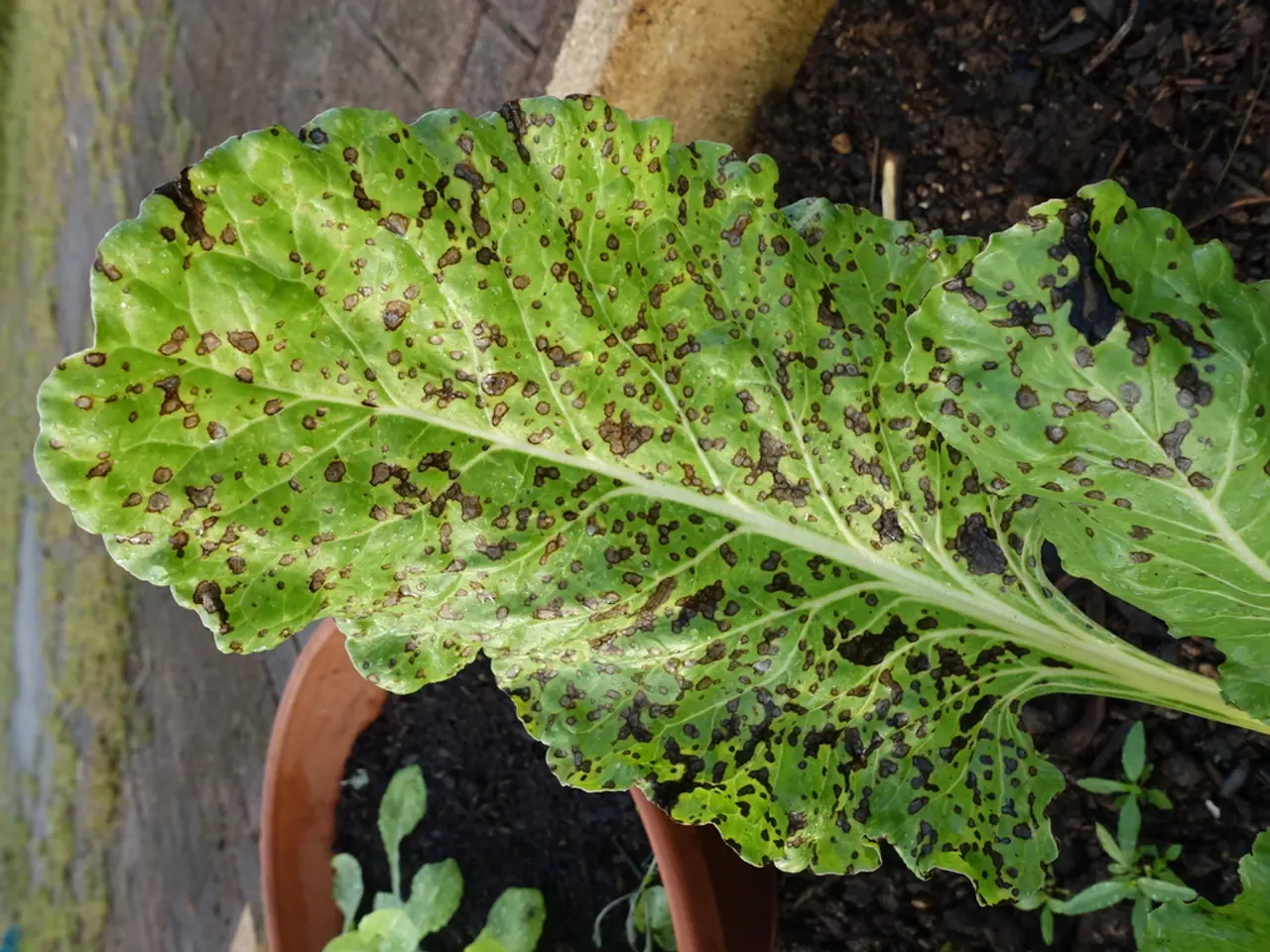Destructive Blight Impacting Brassica Vegetables: Brassicas Suffer from Black Rot
Crucifer plants, such as cabbage, cauliflower, and broccoli, can fall victim to a bacterial disease known as black rot. This disease is caused by the pathogen Xanthomonas campestris and thrives in warm, moist conditions. In this article, we will discuss the strategies for controlling black rot, focusing on cultural practices, resistant varieties, and integrated disease management.
To effectively manage black rot, gardeners and farmers should consider the following cultural practices:
- Crop rotation: Rotating crucifer plants with non-cruciferous crops can help reduce pathogen carryover in soil and plant residue. The bacterium can survive in crop debris for up to two years and infect cruciferous weeds nearby, acting as reservoirs.
- Field sanitation: Removing and destroying infected plant material is crucial for limiting the spread of black rot. Good sanitation practices, such as quick removal of old debris and the use of clean equipment, are essential for black rot control.
- Irrigation: Avoiding overhead irrigation or excessive water splash that spreads the bacterium is recommended. Ensuring good drainage helps limit infection through hydathodes and root wounds.
- Seed health management: Using clean, pathogen-free seeds and seedlings can prevent seed-borne infection.
- Minimizing plant injury: Minimizing injury to plants during cultivation can reduce entry points for the bacterium.
- Weed control: Monitoring and controlling weeds that can harbor the disease is also important.
Research supports breeding and using crucifer cultivars that express resistance traits, such as increased hypersensitive response and accumulation of hydrogen peroxide mediated by plant hormones like salicylic acid. These resistant varieties reduce disease incidence and severity, easing management.
Chemical control options, while traditionally used, face limits due to developing bacterial tolerance and environmental concerns. Therefore, integrated disease management emphasizing cultural controls and resistant varieties is preferred.
Effective black rot management requires:
- Crop rotation and removal of infected residues and cruciferous weeds.
- Use of resistant cultivars with documented genetic resistance.
- Good irrigation and sanitation practices to reduce pathogen spread.
- Seed health management to avoid introducing the bacterium.
By implementing these strategies, growers can reduce disease pressure, prevent yield loss up to 70% in severe infections, and mitigate resistance development in bacterial populations.
As the diseased area of the leaf expands, it turns a mottled brown, and the leaf veins in the affected areas may appear black. The pathogen may enter the stem and spread to all parts of the plant through the vascular system. Once the disease is present, it can easily spread to nearby plants, especially if the plants are crowded. Eventually, the leaf collapses due to black rot.
To prevent black rot, it is recommended to avoid work around wet plants, plant crucifers in well-draining soil, and do not plant crucifers in the same site for at least 3 years. Late-season infections of black rot can be tolerable if precautions are taken to keep infection levels small. Fall tillage will hasten the decomposition of infested crop residue and decrease pathogen populations. Using disease-free seed and transplants is also a crucial cultural practice for black rot control.
Black rot is spread to healthy plants by splashing water, mechanical spread, or insects. To minimize this risk, it is essential to practice good hygiene in the garden or field and avoid working with infected plants when they are wet.
In summary, managing black rot in crucifer plants requires a combination of cultural practices, resistant varieties, and integrated disease management. By following these guidelines, growers can protect their crops from this devastating disease and ensure a successful growing season.
In addition to cultural practices, incorporating nutrition and fitness-and-exercise routines could further bolster plant health, potentially enhancing their resistance to diseases like black rot. For instance, maintaining a fertile soil rich in nutrients can provide essential resources for the plants, strengthening their immune systems. A balanced diet of organic matter and fertilizers can ensure proper nutrient uptake.
On the other hand, adopting fitness-and-exercise routines for plants may seem unconventional, but promoting air circulation and proper sun exposure can help reduce moisture buildup and ward off diseases. Pruning and training plants to maintain an open structure can improve airflow, aiding in disease prevention.
Moreover, researching new medical-conditions and health-and-wellness solutions targeted at plants could uncover novel ways to combat black rot. Studies on plant pharmacology might uncover compounds with antimicrobial properties to treat the disease.
By combining standard strategies with these less common approaches, growers can create a comprehensive approach to dealing with black rot, increasing their chances of producing healthy, high-yielding crucifer plants.




